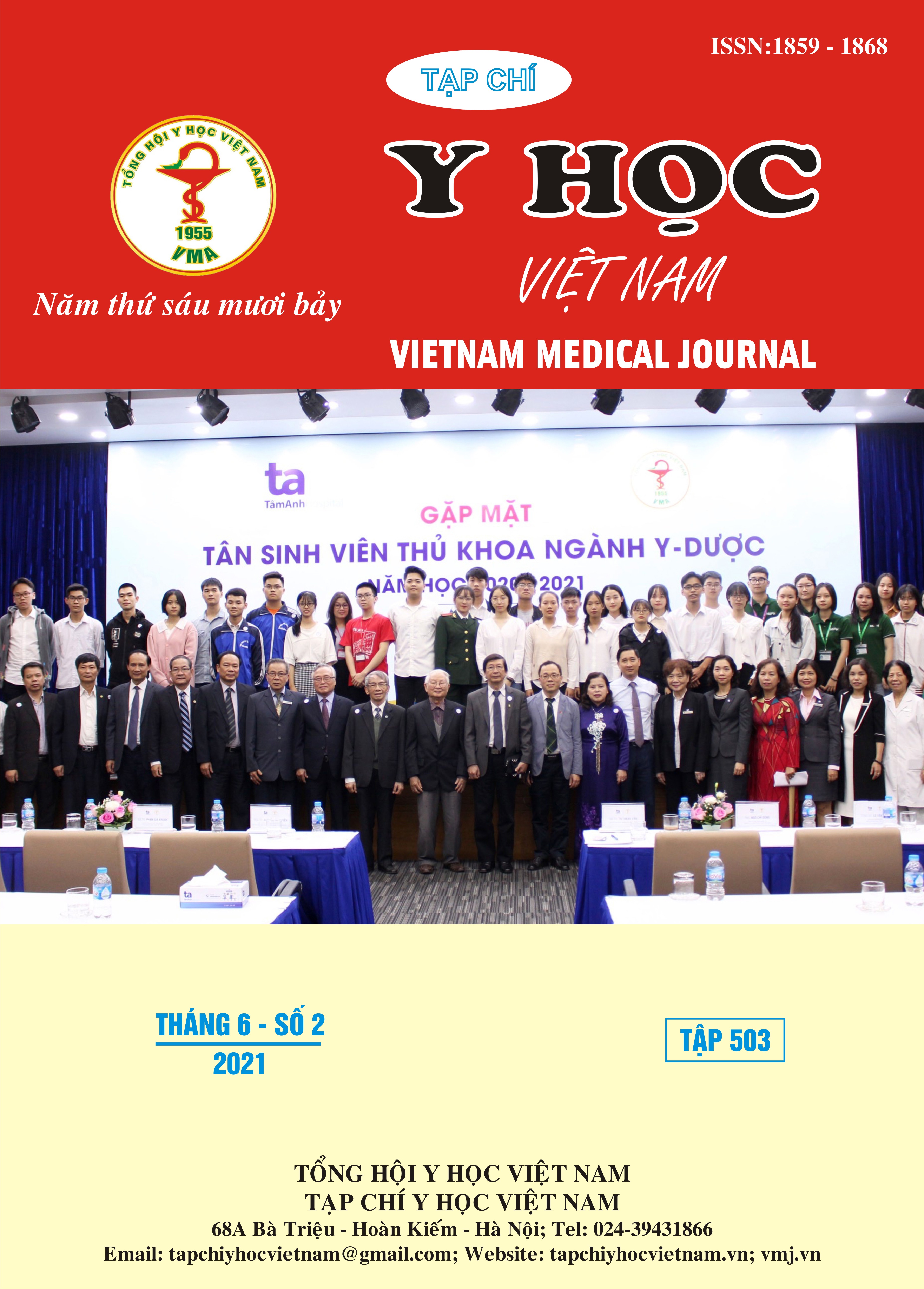NON-INVASIVE PRENATAL TESTING (NIPT) AND ITS APPLICATION IN 7015 CASES AT GENTIS INTERNATIONAL LABORATORY
Main Article Content
Abstract
Birth defects are a global problem that seriously affects quality of life. Genetic abnormalities are the most common cause of birth defects. In recent years, noninvasive prenatal DNA screening is a major step forward in antenatal screening, allowing for earlier screening and reducing the risk of miscarriage due to the use of invasive methods. Applying NIPT technique, we carried out this topic with the aim: To evaluate the correlation rate of chromosomal aneuploidy with factors of gestational age group and maternal serum screening results. Methods: Performing NIPT technique with Truseq Nano DNA LT kit (Illumina) and sequencing on Nextseq 550 (Illumina) for 7015 pregnant women. We obtained the results: the rate of pregnancy with Down was 1.28%, trisomy 18 was 0.24% and trisomy 13 was 0.2%. Conclusion: The incidence of Down is the highest, increasing maternal age increases the risk of children getting Down; Implementation of NIPT technique reduces 98.25% of pregnant women need amniocentesis.
Article Details
Keywords
prenatal screening, NIPT, aneuploidy, birth defects
References
2. Bộ Y tế. Niên giám thống kê y tế 2018.
3. Dines J. N., Eckel A. M., Cheng E. Y., & Lockwood C. M. (2018). A Paradigm Shift: Considerations in Prenatal Cell-Free DNA Screening. The Journal of Applied Laboratory Medicine: An AACC Publication, 2(5), 784-796. https://doi.org/10.1373/jalm.2017.023119
4. Gil M. M., Accurti V., Santacruz B., Plana M. N., & Nicolaides K. H. (2017). Analysis of cell-free DNA in maternal blood in screening for aneuploidies: updated meta-analysis. Ultrasound in Obstetrics and Gynecology, 50(3), 302-314. https://doi.org/10.1002/uog.17484
5. Han S. H., Kang J. S., An J. W., Lee A., Yang Y. H., Lee K. P., & Lee K. R. (2016). Rapid prenatal diagnosis of chromosome aneuploidies in 943 uncultured amniotic fluid samples by fluorescence in situ hybridization (FISH). Journal of Genetic Medicine, 5(1), 47-54. http://www. koreamed.org/SearchBasic.php?RID=2184447
6. Hassold T., & Hunt P. (2001). To err (meiotically) is human: The genesis of human aneuploidy. Nature Reviews Genetics, 2(4), 280-291. https://doi.org/10.1038/35066065
7. Neagos D., Cretu R., Sfetea R. C., & Bohiltea L. C. (2011). The importance of screening and prenatal diagnosis in the identification of the numerical chromosomal abnormalities. Maedica, 6(3), 179-184. https:// pubmed.ncbi.nlm.nih.gov/ 22368694
8. Trần Đức Phấn, Trương Quang Đạt, Phan Thanh Phương, Lương Thị Lan Anh, Nguyễn Xuân Hùng, Hoàng Thu Lan, Nguyễn Thị Lâm (2016). Tình hình dị tật bẩm sinh ở Thanh Khê - Đà nẵng, Phù Cát - Bình Định và Biên Hòa. Y học thực hành. 1027 (11), 154-157.
9. Screening for Fetal Chromosomal Abnormalities: ACOG Practice Bulletin Summary, Number 226. (2020). Obstetrics & Gynecology, 136(4). https:// journals.lww.com/ greenjournal/Fulltext/ 2020/10000/ Screening_for_ Fetal_Chromosomal_Abnormalities_.40.aspx


